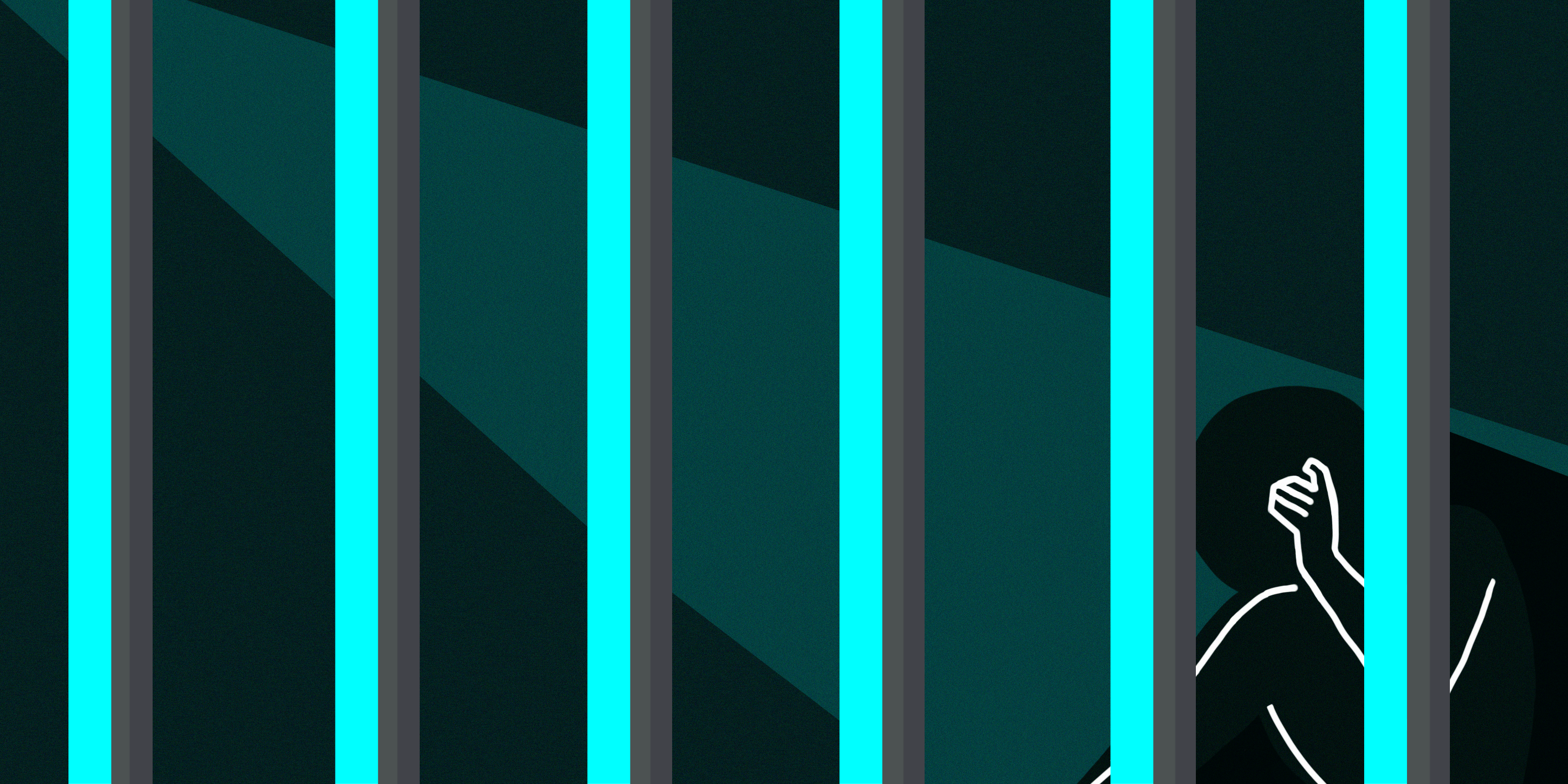The Coalition to Decarcerate IL surveyed people incarcerated across Illinois to show the human impact of COVID-19 in prisons.
Tewkunzi Green’s life shrunk to an eight-by-nine-foot concrete rectangle in March of 2020. While incarcerated at Logan Correctional Center, she and other incarcerated people across the state were confined to their cells — some the size of a parking spot — with no end in sight. As COVID-19 spread throughout the prison, so did anxiety and mental-health struggles for everyone on lockdown.
Now a community educator with the Illinois Prison Project, Green recalls the claustrophobia and confusion that sent the prison into an uproar during Logan’s first COVID-19 lockdown in March of 2020. The Illinois Department of Corrections denied incarcerated people the right of movement — whether it be to common areas, the law library, commissary or for outside visitors.
“The first moment [the virus] came through, it was so hard for people to stay in their rooms, it was so hard for people to understand the process,” Green said. “And when you sitting in a very tight space, everybody’s gonna have a problem — you got fights breaking out, then you got people [who] want to argue with the officers. People could not get along at the time.”
“And when you sitting in a very tight space, everybody’s gonna have a problem.”
The Coalition to Decarcerate IL, a group of activists and family members of people incarcerated across the state, sought to reach incarcerated people for insight into their lives beyond climbing case counts.
In the beginning of 2021, Coalition volunteers began individually sending messages through the Illinois Department of Corrections’ messaging system to 800 incarcerated people across Illinois with a survey asking about their lives behind bars during the pandemic. They received 300 responses.
The Coalition publicly released its survey findings Wednesday, at the COVID-19 Behind Prison Walls: A Culture of Disposability panel. Survey responses detailed ongoing issues with social distancing, mask-wearing, isolation protocols and struggles with inadequate health care behind bars.
“The conditions are extremely harsh, we are confined in our cells for 23 hours per day with another inmate … the psychological toll on all of us incarcerated is devastating, it’s getting bad,” a survey respondent from Dixon Correctional Facility said in the Coalition’s report.
As COVID-19 continued to spread despite lengthy lockdowns, isolation and limited movement began to seem more like a punitive measure than a preventative one, and many activists questioned the role of the lockdowns in keeping incarcerated people safe or healthy.
“The cells are right next to each other right with open-air [between them] and people are sharing a phone down their entire cell block,” Rebecca Bretz, lead organizer with the Coalition, said. “There’s really no way for people to actually socially distance or keep safe even while on lockdown.”
Inadequate healthcare bred fear among those who had contracted COVID-19 behind bars. According to the report, one-third of surveyed people “did not have access to mental health assistance when they needed it.”
“COVID does not jump over the [outer] walls, it walks through the front gate.”
As of March of 2021, two-thirds of people surveyed indicated that officers didn’t always properly wear their masks when around them.
“The more the months start passing by, it was getting ridiculous,” Green said. “People started catching it and people don’t know how they caught it, especially if [they’d] been in the room the whole entire time.”
The Illinois Department of Corrections provided Green and her fellow inmates soap and cleaning supplies during that initial lockdown and things seemed as though they would pass — until those on her cellblock started experiencing symptoms.
“COVID does not jump over the [outer] walls, it walks through the front gate,” Alan Mills, executive director of the Uptown People’s Law Center, said. “The people who walk through that front gate every day are guards and medical people and other staff.”
Despite a lengthy legal fight, 66% of prison staff have been vaccinated against COVID-19 as of December 2021 across the state. Recent reporting from the Chicago Reader and Injustice Watch details that merely 7% of all prison staff has received booster shots of the COVID-19 vaccine as of January 7. These statistics place workers at a lower vaccination rate than the general prison population, with a current vaccination rate of 75%, which some panelists and activists credit as the source of prison outbreaks.
“Nobody here was sentenced to death in prison due to a lack of healthcare.”
“Everybody has a right to care,” Michelle Daniel Jones, a New York University doctoral candidate, who was formerly incarcerated, said. “Nobody here was sentenced to death in prison due to a lack of healthcare.”
One-third of respondents personally knew someone in prison who had died of COVID-19. Though Governor Pritzker commuted her sentence in November of 2020, Green still fears for those left at Logan Correctional Center. As of January 26, Logan and 33 other correctional centers across the state are currently on lockdown.
“After I left, people was passing away in prison and that was hurting my heart the most,” Green said. “People are not getting the care that they should get.”
The Coalition advocates for the mass release of people incarcerated in Illinois and prison abolition in the long term. For now, they advocate for more COVID-19 mitigation measures, including increased testing and staff vaccinations.
“If the government is willing to roll out a massive campaign to mail at home test COVID-19 kits to families across the country, why then are not the same tests made available to incarcerated women and men across the country who are being forced to live under a confined cesspool of semi-permanent or permanent lockdown?” Daniel Jones said.
Header image by Samarah Nasir




NO COMMENT